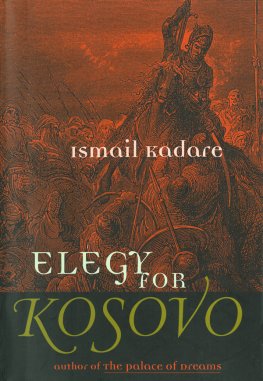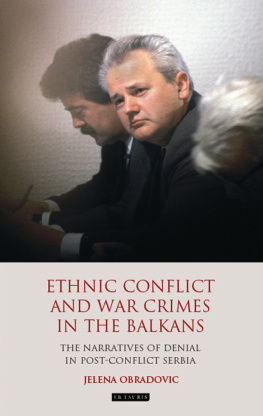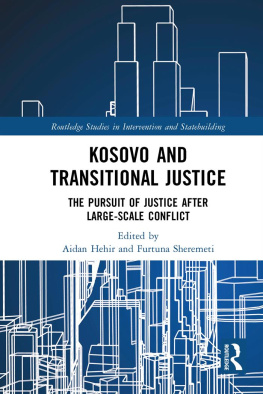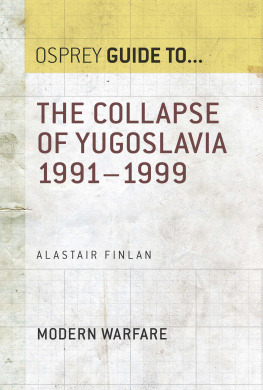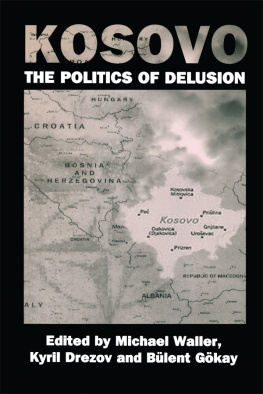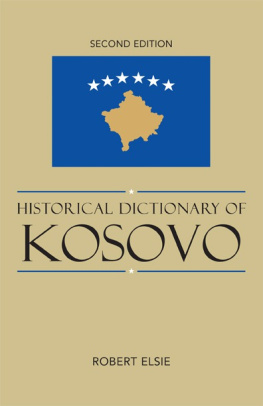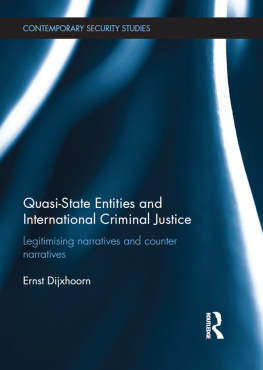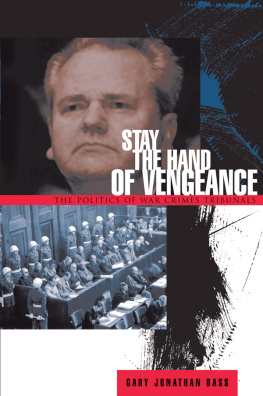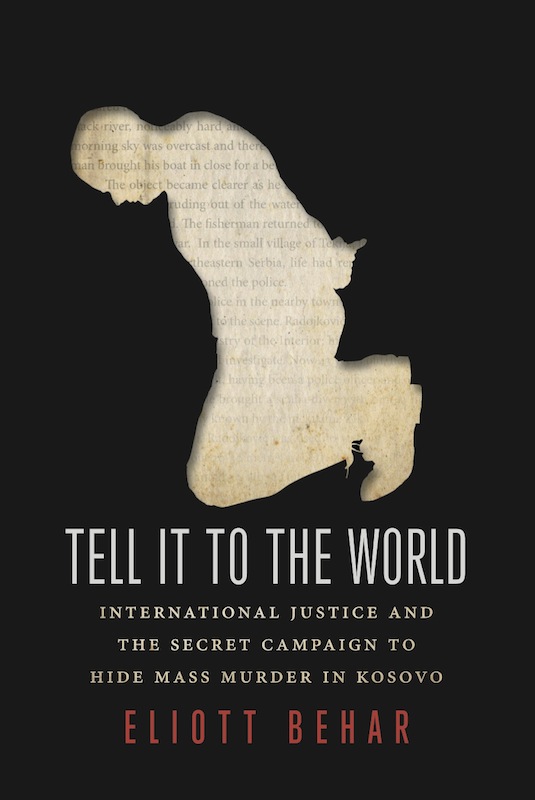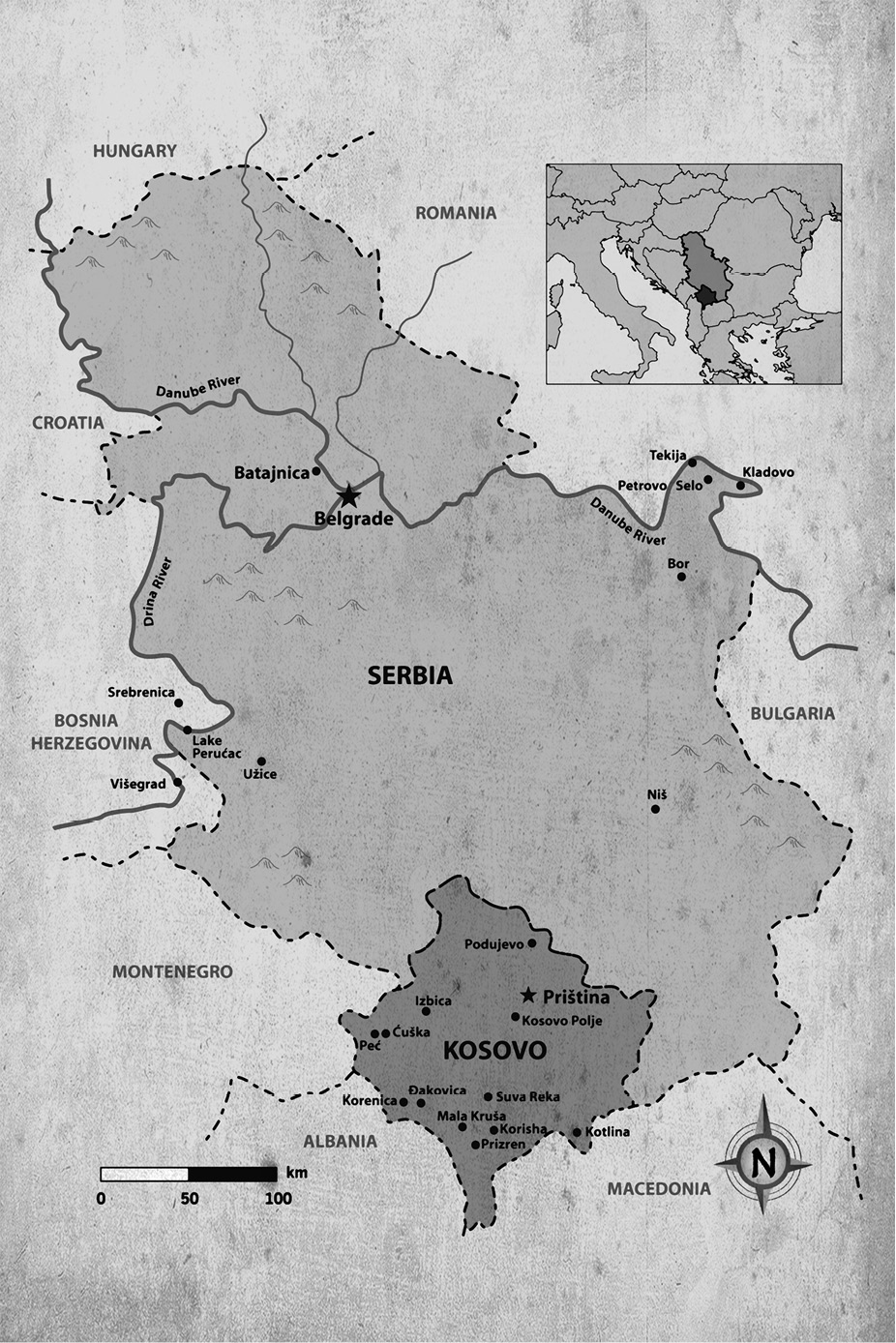Copyright
Copyright 2014 Eliott Behar
All rights reserved. No part of this publication may be reproduced, stored in a retrieval system, or transmitted in any form or by any means, electronic, mechanical, photocopying, recording, or otherwise (except for brief passages for purposes of review) without the prior permission of Dundurn Press. Permission to photocopy should be requested from Access Copyright.
Editor: Dominic Farrell
Design: Courtney Horner
Epub Design: Carmen Giraudy
Cover Design: Ingrid Paulson
Map: Andrew ODriscoll
Library and Archives Canada Cataloguing in Publication
Behar, Eliott, author
Tell it to the world : international justice and the secret campaign to
hide mass murder in Kosovo / Eliott Behar.
Includes index.
Issued in print and electronic formats.
ISBN 978-1-4597-2380-1
1. Kosovo War, 1998-1999--Atrocities. 2. Albanians--Crimes against-
Serbia--Kosovo. 3. War crime trials--Netherlands--Hague. 4. International
Tribunal for the Prosecution of Persons Responsible for Serious Violations
of International Humanitarian Law Committed in the Territory of the
Former Yugoslavia since 1991. I. Title.
DR2087.6.A76B43 2015 949.710315 C2014-906780-1
C2014-906781-X
We acknowledge the support of the Canada Council for the Arts and the Ontario Arts Council for our publishing program. We also acknowledge the financial support of the Government of Canada through the Canada Book Fund and Livres Canada Books, and the Government of Ontario through the Ontario Book Publishing Tax Credit and the Ontario Media Development Corporation.
Care has been taken to trace the ownership of copyright material used in this book. The author and the publisher welcome any information enabling them to rectify any references or credits in subsequent editions.
J. Kirk Howard, President
The publisher is not responsible for websites or their content unless they are owned by the publisher.
Visit us at: Dundurn.com
@dundurnpress
Facebook.com/dundurnpress
Pinterest.com/dundurnpress
Dedication
For my parents
Authors Note
There are a few things I should address before we start.
First, the views expressed here are entirely my own. They do not represent the Tribunal or anyone else.
Second, there is no confidential information contained in this book. Where I have recounted specific events, they have been intensively sourced from public materials events in open court, transcripts of witness testimony, public witness statements, a range of physical exhibits that were tendered into evidence, and final judgments. I have been very careful not to write about anything confidential and I did not (and could not) review any confidential materials in writing this book. Where witnesses were codenamed or had other protective measures imposed, what I have written here is based only on what was provided in open testimony, public exhibits, or the public final judgment in many cases all three. For this reason, there are certain witnesses I have not written about, who might otherwise have added to this account.
This book is not an attempt to re-argue these cases. That job has been done and the resulting evidentiary and documentary records are enormous, numbering many thousands of pages and covering a scope of material, at a level of granularity, that I could never hope to replicate here. One of the great advantages of writing about a trial is that there is an incredible wealth of well-tested material to rely on; one of the main purposes of a trial, after all, is to ensure truth and accuracy. I have, therefore, been careful to keep my descriptions either consistent with findings made by the judges or with evidence that wasnt really disputed.
Finally, a brief note on place names. The cities, towns, and villages in Kosovo have names in both Serbian and Albanian. As with many other things in the Balkans, language and place names can be a sensitive issue. For the purposes of this book I have generally used the Serbian names, if only because these cases were prosecutions of Serbian nationals. This was not a political decision but a practical one.
Where the Dead Men Lost Their Bones
I think we are in rats alley
Where the dead men lost their bones.
T.S. Eliot, The Waste Land , 1922
The fisherman saw it first, the low waves of the Danube rippling across what appeared to be a large crate. The white roof stood out sharply from the blue-black river, hard and immobile against the shifting water. The morning sky was overcast and there was a damp chill in the air. He brought his boat in close for a better look.
The object became clearer as he approached. A container. The back corners were protruding out of the water and the front, he guessed, was stuck in the ground. It was April 4, 1999, and Serbia was at war. But in the small village of Tekija, located in a remote corner of Northeastern Serbia, life had remained relatively quiet thus far. The fisherman returned to shore and called the police.
At around noon, police in the nearby town of Bor dispatched Boko Radojkovi, who drove out to the scene. Radojkovi was a senior crime technician for the Serbian Ministry of the Interior. His job was to attend crime scenes, gather evidence, and investigate. Now forty-three years old, he had a wealth of experience under his belt, having been a police officer and a crime technician since he was eighteen. He brought a scuba diver with him, a man named ivojin orevi, also known by the nickname Zika.
As a policeman, Radojkovi was used to waiting. He stared out at the white box, only about twenty or thirty metres from the bank. Some sort of vehicle. He watched as ivojin put on his aquatic gear and then slipped into the water. He circled near the surface at first but soon disappeared from sight.
Radojkovi was still watching when ivojins head finally broke the surface. He swam back to shore, then turned and looked back out. He took his time removing his gear.
When ivojins equipment was off he walked over to Radojkovi, who was staring out at the water. The men didnt look at each other.
Yes, its a truck a refrigerator truck I think, ivojin said. There is no trace of the driver. And no passenger.
Radojkovi waited.
The front window is missing, ivojin added. And theres a large stone on the accelerator pedal.
He paused.
There is something protruding from the rear of the truck, he finally said. It looks human.
ivojin looked to Radojkovi for guidance. He took a moment, then asked the obvious question.


